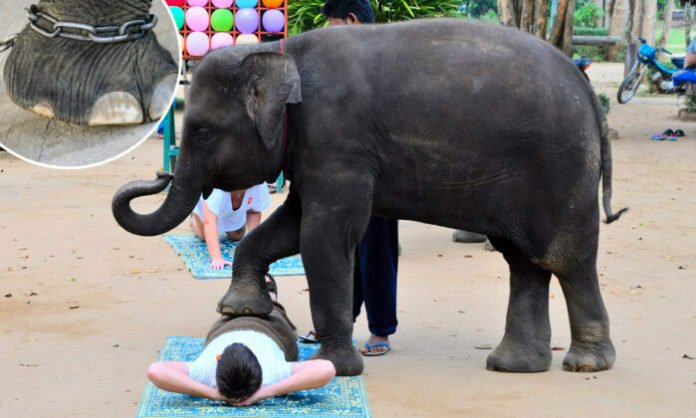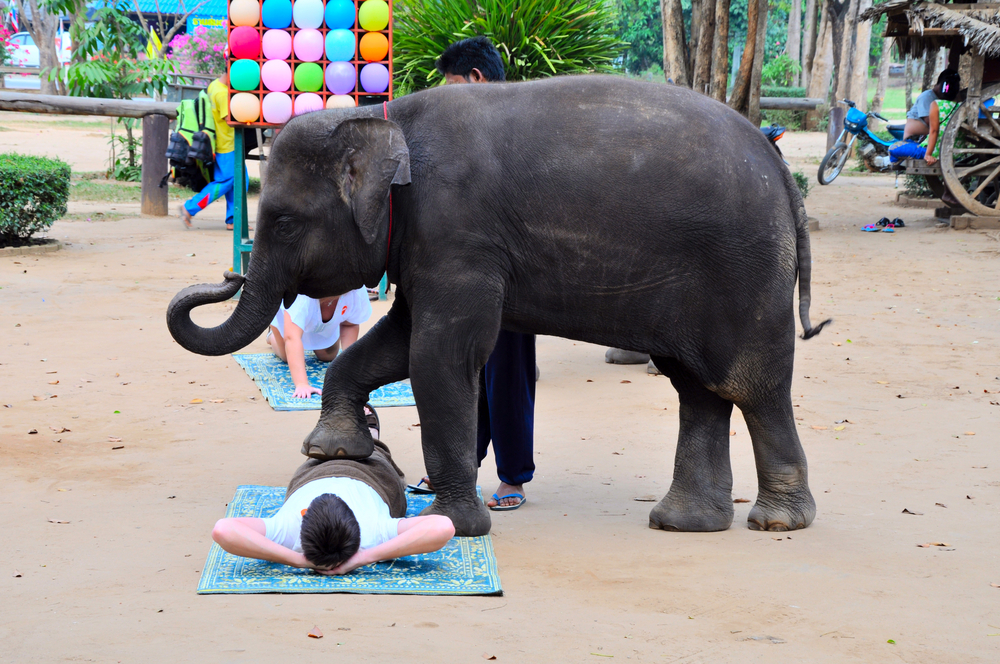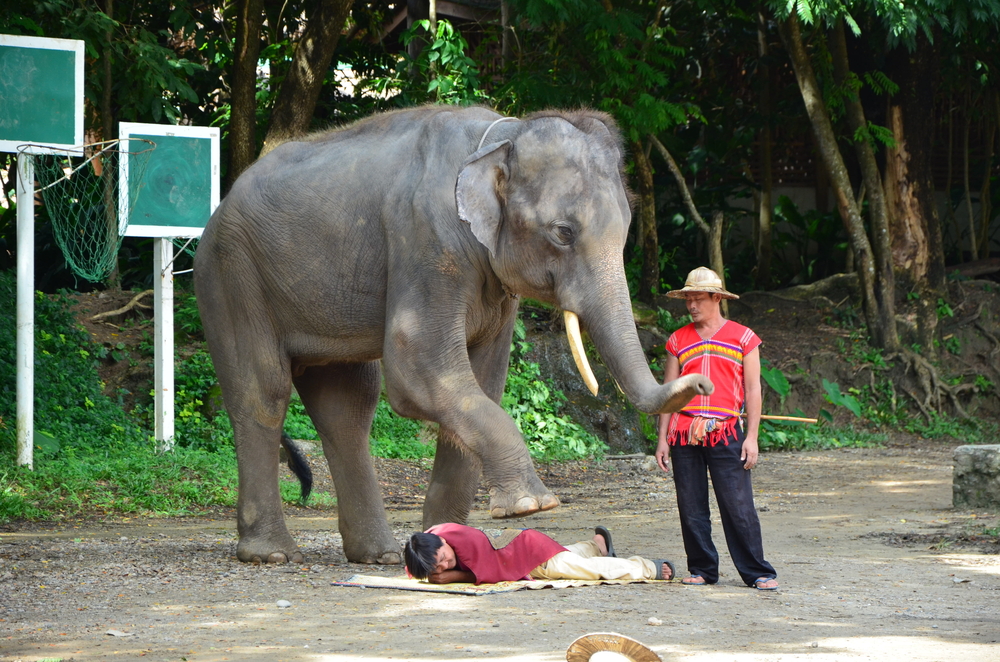An “elephant massage” craze sweeping Thailand and other parts of Asia has risen to the top of tourists’ wish lists in recent years. However, there’s a very serious and heartbreaking incentive to not jump on the bandwagon.
Animal welfare advocates are urging all tourists to boycott elephant massages because the novelty comes at a costly price: the elephant’s well-being.
Elephant massages involve tourists lying face down while an elephant, guided by a “mahout,” or trainer, pats their back using its trunk and feet.
But activists have condemned the practice on the grounds that most of the elephants have been snatched from their mothers as babies and subjected to a brutal training regime.
“Tourists may think activities like riding an elephant do no harm,” Dr. Jan Schmidt-Burbach, senior wildlife and veterinary adviser at World Animal Protection (WAP).
“But the brutal truth is that breaking these animals’ spirits to the point that they allow humans to interact with them involves cruelty at every turn.”
A 2017 WAP report involving 2,923 elephants used in tourist venues across Asia, compiled by Schmidt-Burbach, described the training regime known as “pahjaan” or “crush” in detail.
“Typically, the calf is separated from its mother at an early age,” the report says. “It will then be restrained by chains or ropes and prevented from moving unless commanded to by the trainer or mahout. Often it does not have the space to sit down.”
“Next, the elephant is forced to accept a person riding on its neck and to react to given signals,” Schmidt-Burbach continued. “In many cases, severe pain is inflicted to speed up the process, including stabbing with hooks or other tools to establish dominance over the elephant.”
According to the report, all training tactics are “based on the principle of establishing dominance over the elephant.” Some elephants don’t make it to the end alive.
Of those that survive, the elephants rendered submissive enough to perform will do so for tourists.
Many mahouts employ sharp bullhooks to keep their performing elephants under control.
According to National Geographic, there are twice as many elephants in tourism in Thailand than in all the other Asian countries combined. By law, elephants are classified as livestock in Thailand.
Tourists have long been seduced by the novelty of elephant massages.
The Elephant Nature Park in northern Thailand, however, is providing a model for change and the chance for tourists to enjoy seeing elephants in their natural habitat.
The elephant rescue and rehabilitation center has been involved in dozens of elephant rescues. Schmidt-Burbach described such sanctuaries as “beacons of hope” for the future.
Elephant Nature Park’s owner, Lek, even started an outreach program to help and encourage mahouts in northern Thailand to provide basic health care and nutritious food for their elephants.
On a wider scale, an audit program introduced in 2017 aims to improve the quality of life for elephants employed in the tourism industry.
The Captive Elephant Welfare Initiative enforces detailed, regular inspections for any Thai elephant camp wishing to gain certification.
According to The New York Times, as of the summer of 2019, the program has audited 20 elephant camps in Thailand for compliance so far, including introducing a living wage for the mahouts who rely upon elephants for their livelihood.
“Most tourists sign up for experiences with elephants because they love wild animals and don’t know about the cruelty behind the rides, tricks, and photo opportunities,” Schmidt-Burbach explained.
“If people knew the facts, then they wouldn’t participate in cruel elephant activities,” she adds. “The best place to see an elephant is in the wild, or at a genuine elephant sanctuary.”








